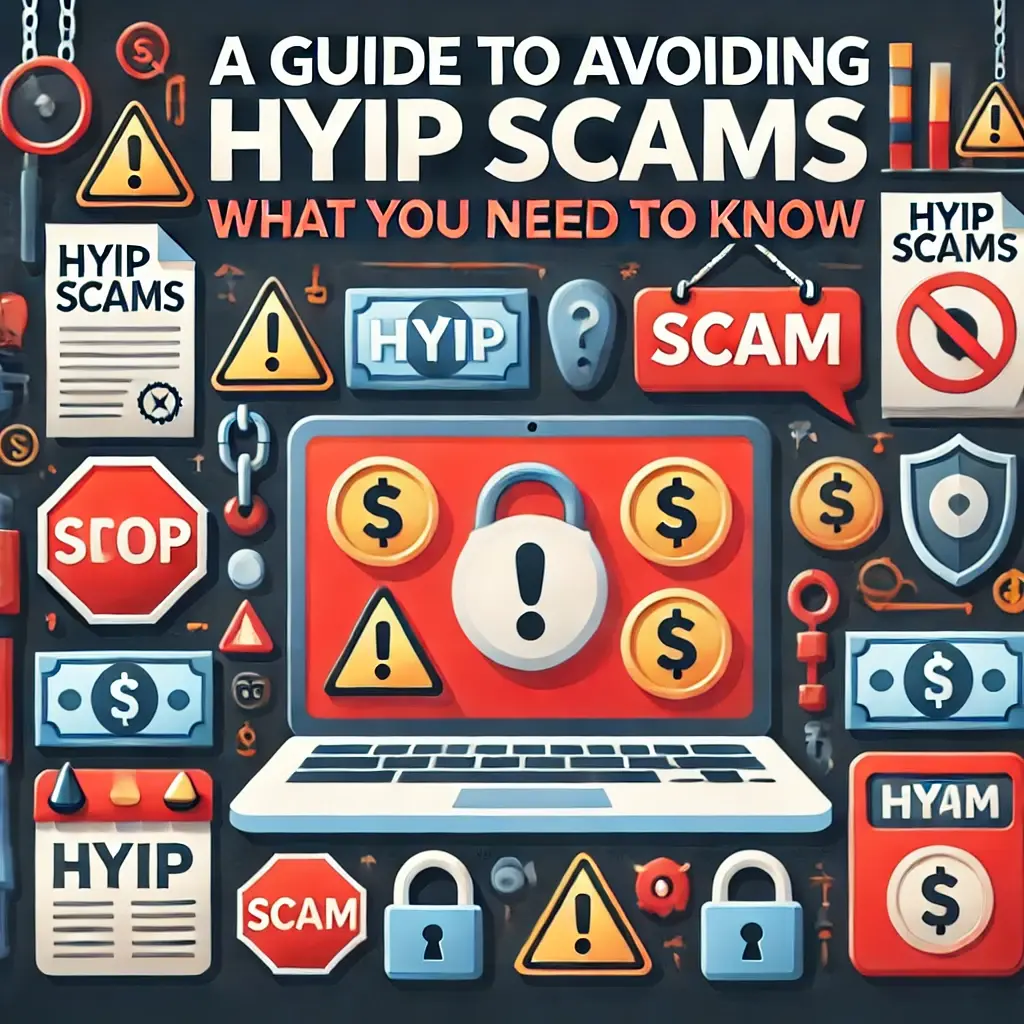Introduction
A Guide to Avoiding HYIP Scams: What You Need to Know. High-Yield Investment Programs (HYIPs) promise unusually high returns, enticing investors seeking quick profits. However, beneath the attractive facade lies a complex web of risks, scams, and financial pitfalls. This article delves into the world of HYIPs, exploring what they are, the types of schemes, and the allure that draws investors in.
What are High-Yield Investment Programs?
High-Yield Investment Programs (HYIPs) are investments that promise unusually high returns, often significantly exceeding traditional investment yields. These programs typically involve investing in unconventional assets or using complex investment strategies.
Characteristics of HYIPs
– High returns: 10%-50% monthly or 100%-500% annual
– Unconventional assets: cryptocurrency, real estate, forex
– Complex strategies: trading, arbitrage, hedging
– Limited transparency: unclear investment details
– Unregistered investments: operating outside regulatory frameworks
Types of HYIP Schemes
Several types of HYIP schemes exist, each with unique characteristics:
1. Ponzi Schemes: Named after Charles Ponzi, these schemes involve paying returns to existing investors using funds from new investors.
2. Pyramid Schemes: Similar to Ponzi schemes, pyramid schemes rely on recruiting new investors to fund returns for existing investors.
3. Cryptocurrency Schemes: HYIPs involving cryptocurrency trading or initial coin offerings (ICOs) promise unusually high returns.
4. Forex Trading Schemes: HYIPs involving foreign exchange trading promise high returns through leveraged trading.
5. Real Estate Schemes: HYIPs involving real estate investments promise high returns through property flipping or rental income.
The Allure of HYIP Schemes: Promise of High Returns
HYIPs lure investors with promises of unusually high returns, often:
1. Unrealistic Returns: 10%-50% monthly or 100%-500% annual
2. Guaranteed Income: HYIPs promise fixed, high returns, regardless of market performance.
3. Low Risk: HYIPs downplay or conceal risks, assuring investors of safety.
4. Exclusive Opportunities: HYIPs create a sense of urgency, claiming limited spots or exclusive access.
Risks Associated with HYIPs
A Guide to Avoiding HYIP Scams: What You Need to Know
1. Lack of Transparency: Unclear investment strategies and unregistered investments.
2. Unregistered Investments: HYIPs often operate outside regulatory frameworks.
3. High Pressure: Investors face pressure to invest quickly, without conducting research.
4. Scams and Frauds: Many HYIPs are outright scams, designed to steal investor funds.
How to Avoid HYIP Scams
1. Research Thoroughly: Verify investment details and regulatory registration.
2. Verify Registration: Check with regulatory bodies (SEC, FINRA, etc.)
3. Be Cautious: Unrealistic returns and pressure tactics are red flags.
4. Diversify: Spread investments across asset classes.
5. Seek Professional Advice: Consult a financial advisor.
Conclusion
High-Yield Investment Programs promise unusually high returns but often conceal significant risks. Understanding what HYIPs are, the types of schemes, and the allure that draws investors in can help you avoid financial pitfalls.
Protect yourself from HYIP scams. Stay informed, stay vigilant.

